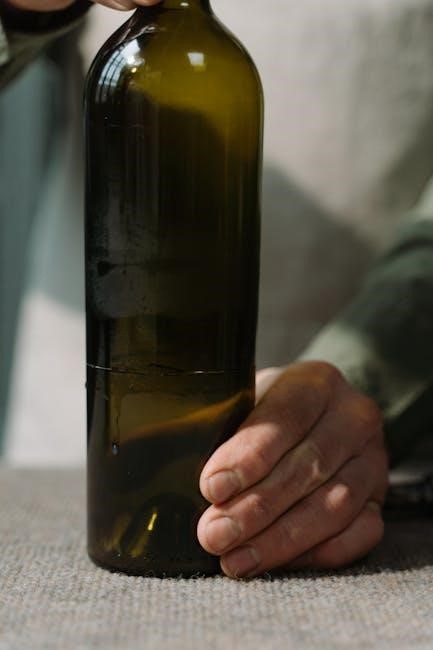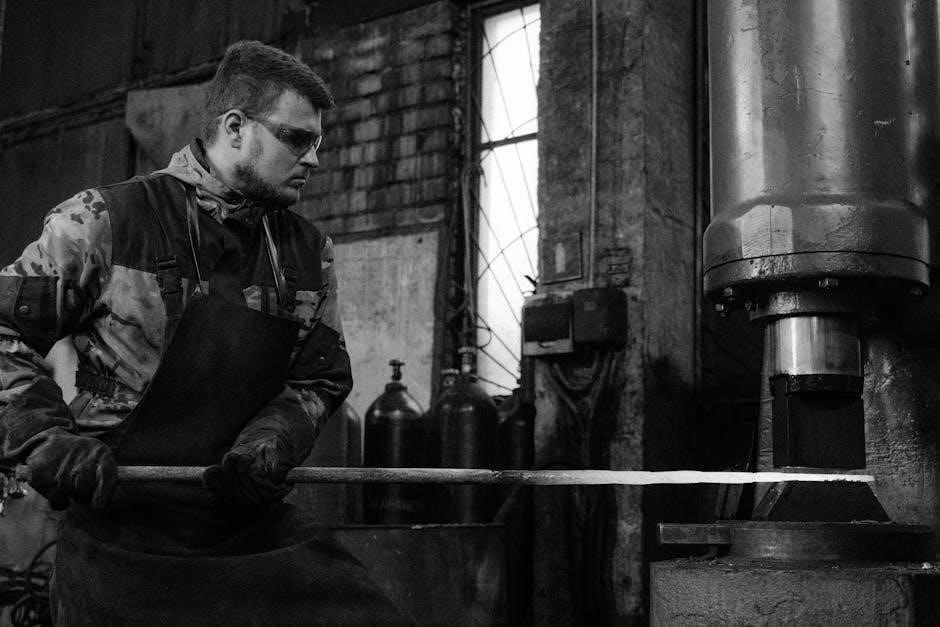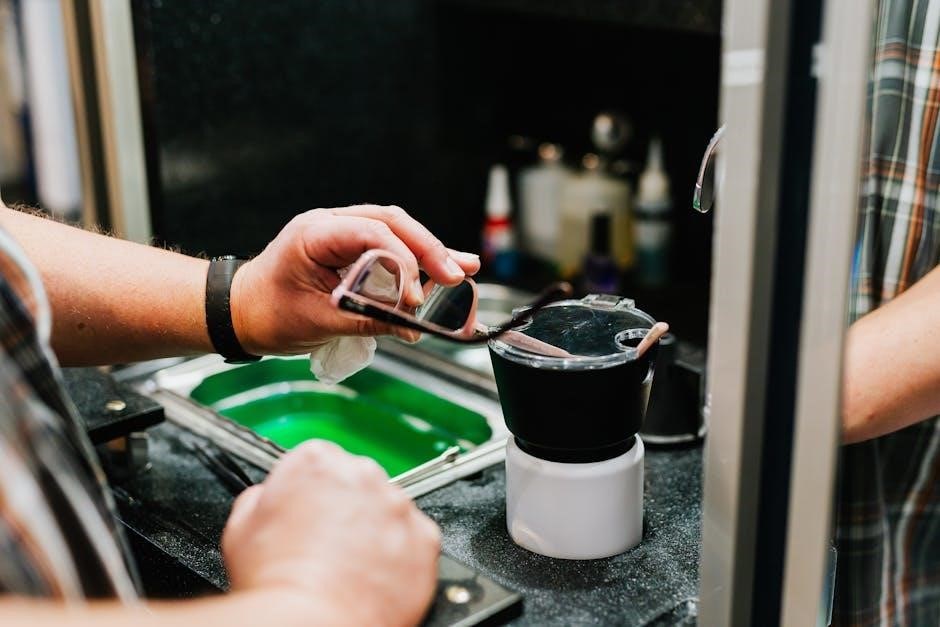
ortho-glass splinting manual pdf
Ortho-Glass Splinting Manual PDF: A Comprehensive Guide
Welcome to the user manual for your newly integrated Ortho-Glass Splinting Manual! This comprehensive guide offers a detailed overview to maximize your product’s potential, covering applications, techniques, and post-application care. Join our community and discover the potential of ortho-glass splinting today!
Ortho-Glass splinting represents a significant advancement in orthopedic immobilization, offering a synthetic alternative to traditional plaster or fiberglass casts. This manual serves as a comprehensive guide to understanding and effectively utilizing Ortho-Glass for various clinical applications. Ortho-Glass is composed of a unique 3D knit material combined with a resin system, providing enhanced comfort, breathability, and conformability compared to conventional splinting methods.
This introduction will delve into the fundamental principles of Ortho-Glass splinting, highlighting its benefits in terms of patient comfort, ease of application, and potential for improved outcomes. We will explore the history and evolution of synthetic splinting materials, emphasizing the innovative features that distinguish Ortho-Glass from other options available. Furthermore, this section will outline the scope of this manual, providing a roadmap for navigating the subsequent chapters that cover material properties, indications, contraindications, application techniques, post-application care, and potential complications.
By providing a solid foundation in the basics of Ortho-Glass splinting, this introduction aims to empower healthcare professionals with the knowledge and skills necessary to confidently incorporate this advanced technology into their practice, ultimately improving the quality of care for their patients.
Ortho-Glass Material Composition and Properties
Understanding the composition and properties of Ortho-Glass is crucial for effective application and achieving optimal patient outcomes. Ortho-Glass consists primarily of a knitted fiberglass substrate impregnated with a polyurethane resin. The fiberglass provides strength and rigidity, while the resin enables the splint to harden and maintain its shape after molding. The knitted structure allows for multi-directional stretch and conformability, adapting readily to the patient’s anatomy.
Key properties of Ortho-Glass include its lightweight nature, radiolucency, and breathability. The reduced weight enhances patient comfort and mobility compared to traditional plaster casts. Radiolucency allows for clear visualization of underlying bony structures during X-ray imaging, facilitating fracture monitoring without splint removal. The breathable knit structure promotes air circulation, minimizing skin maceration and discomfort.
Furthermore, Ortho-Glass exhibits excellent conformability, allowing for precise molding around complex anatomical contours. It demonstrates rapid setting times when activated with water, enabling efficient application. The material is also durable and water-resistant, maintaining its structural integrity even with moderate exposure to moisture. Understanding these material properties is essential for selecting the appropriate Ortho-Glass product and application technique for various clinical scenarios.
Indications for Ortho-Glass Splinting
Ortho-Glass splinting is indicated for a variety of orthopedic conditions requiring immobilization and support. It is commonly used for acute fractures, sprains, and strains, providing stability and pain relief during the initial healing phase. Specifically, Ortho-Glass is suitable for fractures of the forearm, wrist, hand, ankle, and foot, offering a lightweight and radiolucent alternative to traditional casting methods.

Furthermore, Ortho-Glass is beneficial for post-operative immobilization following orthopedic surgeries, such as fracture fixation, tendon repair, or ligament reconstruction. It helps protect the surgical site, reduce edema, and promote optimal healing. Ortho-Glass splints can also be used for managing soft tissue injuries, including severe contusions, dislocations, and tendonitis, providing support and limiting movement to facilitate tissue repair.
In pediatric orthopedics, Ortho-Glass is frequently employed for managing greenstick fractures and buckle fractures, offering a comfortable and easily adjustable immobilization option. Its conformability makes it suitable for various anatomical contours, ensuring a secure fit. Additionally, Ortho-Glass can be used for serial casting in the treatment of clubfoot or other congenital deformities, gradually correcting the alignment over time. The versatility of Ortho-Glass makes it a valuable tool in orthopedic practice.
Contraindications for Ortho-Glass Splinting
While Ortho-Glass splinting offers numerous advantages, certain contraindications must be considered before application. Open wounds or active skin infections in the area to be splinted are absolute contraindications, as the splint can trap bacteria and exacerbate the infection. Similarly, patients with known allergies to the materials used in Ortho-Glass, such as fiberglass or resin, should not undergo this type of splinting.
Severe vascular compromise or significant swelling in the affected limb also contraindicate Ortho-Glass splinting. The constrictive nature of the splint can further impede blood flow, potentially leading to ischemia or compartment syndrome. In cases of unstable fractures or dislocations requiring immediate surgical intervention, splinting may be deferred until after the surgical procedure. Patients with impaired sensation or cognitive deficits may not be suitable candidates, as they may be unable to report early signs of complications like pressure sores or nerve compression.
Furthermore, Ortho-Glass splinting may be relatively contraindicated in situations where frequent adjustments or access to the underlying tissues are necessary. In such cases, alternative splinting methods or casting may be more appropriate. Careful assessment of the patient’s overall condition, injury characteristics, and potential risks is crucial before deciding on Ortho-Glass splinting.
Required Materials and Equipment

Successful Ortho-Glass splinting requires a well-prepared setup with all necessary materials and equipment readily available. First and foremost, you’ll need the Ortho-Glass splinting material itself, available in various widths and lengths to accommodate different body parts. Stockinette should be available in several sizes to provide a comfortable, protective layer against the skin. Padding, such as cast padding or Webril, is essential to cushion bony prominences and ensure even pressure distribution.

Water is crucial for activating the resin in the Ortho-Glass material. A basin or container filled with water at room temperature is ideal. Protective gloves are necessary to prevent skin irritation from the resin. Scissors or shears will be needed to cut the stockinette, padding, and Ortho-Glass to the appropriate size. A measuring tape or ruler ensures accurate sizing and placement.
Additional equipment may include a bandage or elastic wrap to secure the splint in place during the hardening process. A smooth, non-porous surface, such as a table or countertop, provides a clean workspace. Finally, consider having a heat gun available to speed up the drying process, especially in colder environments. Proper preparation ensures efficient and effective Ortho-Glass splinting.
Step-by-Step Application Technique
The application of an Ortho-Glass splint requires careful attention to detail. Begin by assessing the injury and selecting the appropriate size of Ortho-Glass. Apply a stockinette to the affected area, extending beyond the intended splint margins. Next, apply 2-3 layers of padding, ensuring adequate coverage over bony prominences. Lightly moisten the padding for better conformability.
Open the Ortho-Glass packaging and immerse the material in room-temperature water for the recommended time. Remove the Ortho-Glass and squeeze out any excess water. Carefully mold the Ortho-Glass to the affected area, ensuring proper contouring and support. Overlap the edges of the Ortho-Glass to create a secure and stable splint.
Apply a bandage or elastic wrap to hold the splint in place while it hardens. Mold and shape the splint as it cures, paying close attention to anatomical landmarks. Monitor the patient for any signs of discomfort or pressure. Once the splint is fully hardened, check for proper fit and function. Provide the patient with instructions on post-application care, including hygiene and activity modifications. Regular monitoring is essential to ensure optimal healing and prevent complications.
Specific Splinting Techniques (e.g., Volar Splint)
Different injuries necessitate specific splinting techniques to ensure proper immobilization and support. One common technique is the volar splint, used for wrist injuries such as fractures or sprains. To apply a volar splint, position the wrist in neutral to 20 degrees of extension.
Begin by applying a stockinette and padding to the forearm and hand. Cut the Ortho-Glass to the appropriate length, extending from the distal palmar crease to approximately two inches below the elbow. Moisten the Ortho-Glass and mold it to the volar aspect of the forearm and hand, ensuring a comfortable and conforming fit. Secure the splint with a bandage, carefully shaping it to maintain the desired wrist position. Monitor for any signs of neurovascular compromise.
Another technique involves using a custom gauge wax strip to establish the position of the final retainer. The Matrix silicone can then be used. These specialized techniques often require additional training and expertise to ensure proper application and patient outcomes.
Post-Application Care and Monitoring
Following the application of an Ortho-Glass splint, diligent post-application care and monitoring are crucial for optimal healing and to prevent complications. Patients should be provided with clear instructions regarding splint care, including keeping the splint clean and dry. Advise patients to avoid getting the splint wet, as moisture can compromise its integrity and lead to skin irritation.
Regular monitoring is essential to assess for any signs of complications, such as increased pain, swelling, numbness, tingling, or changes in skin color. Patients should be instructed to seek immediate medical attention if they experience any of these symptoms. Additionally, it’s important to check the splint’s fit and ensure it remains properly positioned. The bandage should be snug but not too tight, as excessive pressure can lead to neurovascular compromise. Adjustments to the splint may be necessary as swelling subsides or the injury heals.

Patient education plays a vital role in successful splint management.
Potential Complications and Management
While Ortho-Glass splinting is generally safe, potential complications can arise. These include skin irritation or breakdown due to pressure or moisture, neurovascular compromise from overly tight bandaging, and compartment syndrome, a serious condition requiring immediate intervention. Patients should be educated on recognizing early signs of these complications, such as increased pain, swelling, numbness, tingling, or changes in skin color.
Management strategies vary depending on the complication. Skin irritation may be addressed with proper hygiene, padding adjustments, or alternative splinting materials. Neurovascular compromise necessitates immediate loosening of the bandage and close monitoring. Suspected compartment syndrome requires urgent evaluation and potential fasciotomy to relieve pressure. Additionally, improper splint application can lead to delayed healing or malunion, highlighting the importance of proper technique.
Preventive measures are crucial. Use appropriate padding, ensure proper splint fit, and educate patients on splint care. Regular monitoring and prompt intervention can minimize the risk and severity of complications, ensuring optimal patient outcomes.
Alternatives to Ortho-Glass Splinting
While Ortho-Glass offers numerous advantages, several alternatives exist for immobilization. Traditional plaster casts remain a viable option, offering rigidity and cost-effectiveness, but they are heavier and less breathable than synthetic alternatives. Fiberglass casts provide a balance of strength and weight, but can be more challenging to mold.
For less severe injuries, malleable aluminum splints offer adjustability and support. Air splints provide pneumatic compression and immobilization. Synthetic splinting materials like fiberglass offer lightweight and radiolucent properties. The choice depends on the injury’s severity, location, patient factors, and clinician preference.
Removable options, such as braces and orthoses, allow for controlled movement and hygiene. These are suitable for stable fractures or post-operative management; Newer options include 3D-printed casts, offering customized fit and ventilation. Understanding the pros and cons of each alternative allows clinicians to tailor treatment for optimal patient outcomes.
Ultimately, the best choice depends on a comprehensive assessment of the patient’s needs and the specific injury characteristics.